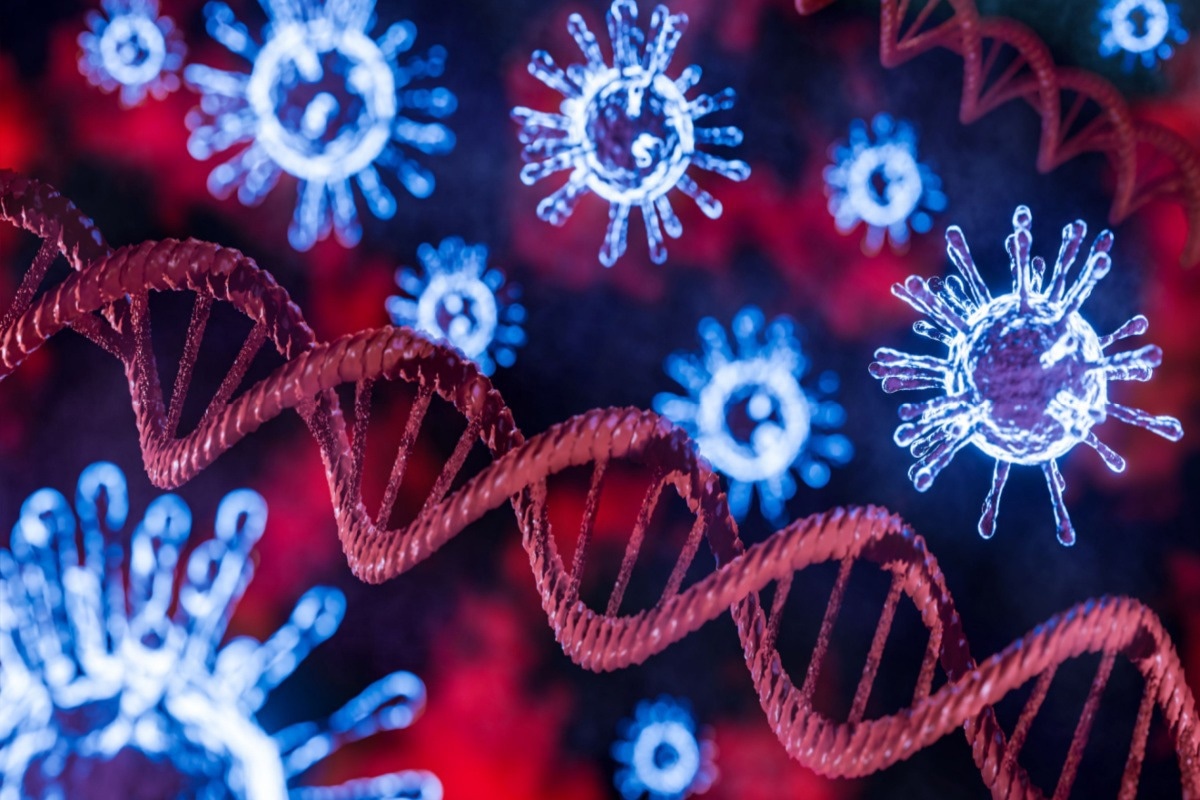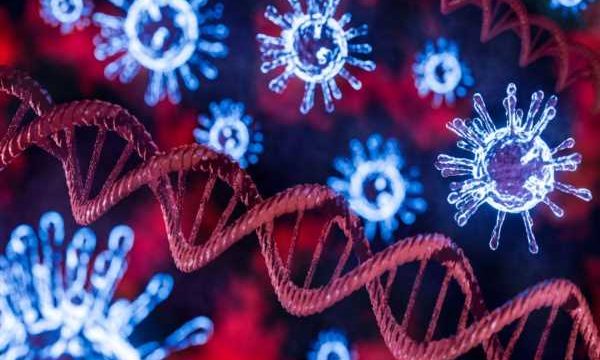In a recent study posted to the bioRxiv* preprint server, researchers demonstrated that vaccine frameworks containing deoxyribonucleic acid (DNA) origami possessing severe acute respiratory syndrome coronavirus 2 (SARS-CoV-2) receptor-binding domain (RBD) induce strong protective immunity.

Background
Vaccines that are both safe and effective are essential weapons in the fight against infectious illnesses. The emergence of SARS-CoV-2 and the subsequent spread of coronavirus disease 2019 (COVID-19) have placed unprecedented strains on the world's healthcare systems.
The necessity to create strategies for effective and rapid vaccine development has been brought to light by the quick spread of SARS-CoV-2. DNA origami nanoparticles (DNA-NPs) possessing different antigens in predetermined nanoscale patterns have emerged recently as an efficient, safe, and readily scalable substitute for rational vaccine design.
About the study
In the present study, the researchers created a DNA-NP COVID-19 vaccine platform, i.e., DNA-NP nanovaccine, that can simultaneously accommodate numerous copies of a single immunogen and adjuvant. Further, they evaluated its efficacy and immunogenicity in vivo. The team developed a DNA pentagonal bipyramid (PB) containing cytosine-phosphorothioate-guanine oligodeoxynucleotides (CpG ODN 1018) adjuvant and the trimeric-SARS-CoV-2 RBD antigen. Thereby the researchers analyzed the effectiveness of the DNA-NP nanovaccine in eliciting a protective and robust immune response.
The researchers created a 36.5 nm-diameter DNA PB utilizing DNA Origami Sequence Design Algorithm for User-defined Structures (DAEDALUS) software. Additionally, they produced the reconstituted RBD-trimer and applied it to the DNA-NPs as an immunogen. The authors employed a widely available modified form of protein G, i.e., cytosine-phosphorothioate-guanine (cys-PG/CpG), possessing a single cysteine residue at its N-terminal.
The team hybridized 10 copies of PG-peptide nucleic acid strand (PNA) to overhangs presented on DNA-NP surfaces to regulate the stoichiometry and arrangement of the RBD-trimers on DNA-NP surfaces. They tested the stability of the present DNA-NP nanovaccines in simulated physiological circumstances before determining their effectiveness in vivo.
By comparing the binding kinetics of the DNA-NP nanovaccines displaying RBD-trimer to the free RBD, the scientists used surface plasmon resonance (SPR) to confirm the accessibility of the antigens on NP surfaces. Upon validating the RBD availability on DNA-NPs, they produced four distinct constructs to carry out vaccination tests using a BALB-C mouse model.
Besides, using the keratin 18-human angiotensin-converting enzyme 2 (K18-hACE2) transgenic mouse model, the researchers examined whether the DNA-NP immunization strategy protects against a lethal SARS-CoV-2 challenge. They injected five K18-hACE2 mice with five distinct DNA-NP nanovaccine constructs, RBD-PB (1 and 5 μg), Bare PB, PB-CpG, and RBD-PB-CpG (1 μg).
Results
The study results indicated that the PB diameter estimated using dynamic light scattering (DLS) was 51.4, corresponding to a 46.4 nm theoretical diameter, including overhangs. This result was in line with the prior findings involving this kind of NPs. PG-PNA binding to overhangs was validated using polyacrylamide gel electrophoresis (PAGE). The investigators then used agarose gel electrophoresis to confirm the adhesion of the RBD-PG protein complex with PB NP and CpG hybridization.
According to the fluorescence resonance energy transfer (FRET) findings, following 10 hours, 40% of the Bare PB remained intact. Interestingly, PB altered with CpG strands and a mixture of RBD, demonstrating noticeably enhanced stability, with more than 70% of the particles still present following 10 hours. These findings show that protein and modified nucleic acid coating of DNA-NPs can contribute to enhancing the stability against nucleases without requiring complicated chemical alterations, as suggested by existing literature.
The present investigations identified equilibrium dissociation constant (Kd) values of surface plasmon resonance (SPR) gold sensor surfaces modified with the soluble ACE2 receptor in the identical range as earlier published experiments.
In addition, the plaque reduction neutralization test (PRNT) data indicated that PB with a 5-μg of RBD and a 1-μg of RBD combined with CpG ODN 1018 were both very successful in producing a potent neutralizing antibody response. The data demonstrated considerable viral infectivity inhibition from the vero monolayer at more than 1:1024 dilution. In contrast, PB with 1 μg RBD had only minimal inhibition efficiency, and PB only had no impact on viral inhibition.
The current study confirmed previous findings that a CpG 1018 adjuvant efficiently elicited neutralizing antibodies and type 1 T helper (Th1)-biased cell responses targeting SARS-CoV-2. The present results showed that giving PB combined with CpG and 1 μg RBD improved immunity to the virus. Furthermore, the use of CpG enhanced immunization and permitted the utilization of smaller doses of antigen to elicit a focused and potent immune response.
Conclusions
Overall, in the current study, by utilizing the unique qualities of the DNA-NPs, the team showed that meticulously arranging 10 copies of a reconstituted SARS-CoV-2 RBD trimer on the DNA-NPs and adding CpG adjuvants could induce a potent protective immunity towards SARS-CoV-2 in a mouse model. The viral challenge assessments demonstrated that even low antigen concentrations delivered by DNA-NPs, combined with adjuvants, were adequate to protect from the virus. The present findings show the potential of the authors' DNA-NP-based strategy for creating efficient and safe nanovaccines against infectious illnesses.
*Important notice
bioRxiv publishes preliminary scientific reports that are not peer-reviewed and, therefore, should not be regarded as conclusive, guide clinical practice/health-related behavior, or treated as established information.
- Esra Oktay, Farhang Alem, Keziah Hernandez, Aarthi Narayanan, Remi Veneziano. (2022). DNA Origami Presenting the Receptor Binding Domain of SARS-CoV-2 Elicit Robust Protective Immune Response. bioRxiv. doi: https://doi.org/10.1101/2022.08.02.502186 https://www.biorxiv.org/content/10.1101/2022.08.02.502186v1
Posted in: Medical Science News | Medical Research News | Disease/Infection News
Tags: ACE2, Angiotensin, Angiotensin-Converting Enzyme 2, Antibodies, Antibody, Antigen, Cell, Coronavirus, Coronavirus Disease COVID-19, covid-19, CpG, Cysteine, Cytosine, DNA, Dynamic Light Scattering, Efficacy, Electrophoresis, Enzyme, Fluorescence, FRET, Gel Electrophoresis, Guanine, Healthcare, Hybridization, Immune Response, immunity, Immunization, in vivo, Mouse Model, Nanoparticles, Nucleic Acid, Protein, Receptor, Respiratory, SARS, SARS-CoV-2, Severe Acute Respiratory, Severe Acute Respiratory Syndrome, Syndrome, Transgenic, Vaccine, Virus

Written by
Shanet Susan Alex
Shanet Susan Alex, a medical writer, based in Kerala, India, is a Doctor of Pharmacy graduate from Kerala University of Health Sciences. Her academic background is in clinical pharmacy and research, and she is passionate about medical writing. Shanet has published papers in the International Journal of Medical Science and Current Research (IJMSCR), the International Journal of Pharmacy (IJP), and the International Journal of Medical Science and Applied Research (IJMSAR). Apart from work, she enjoys listening to music and watching movies.
Source: Read Full Article
